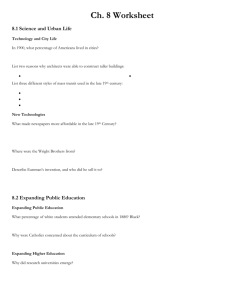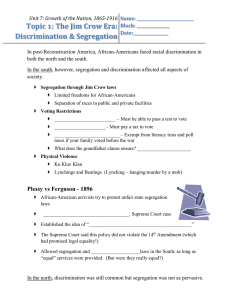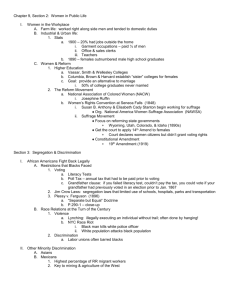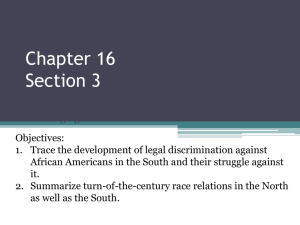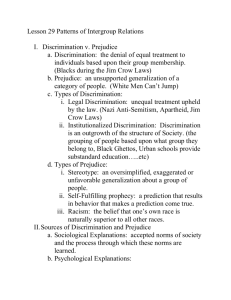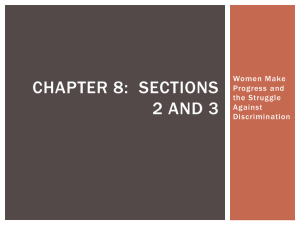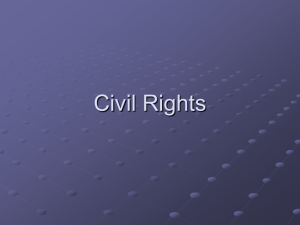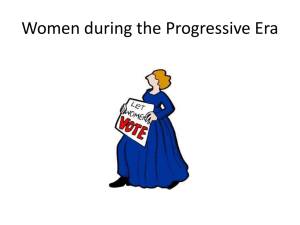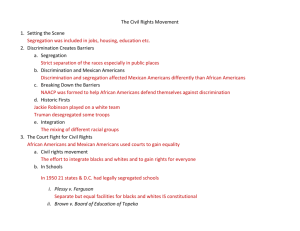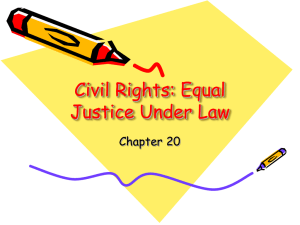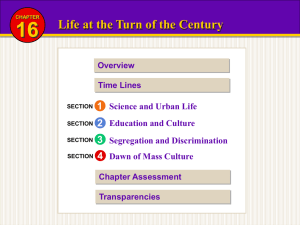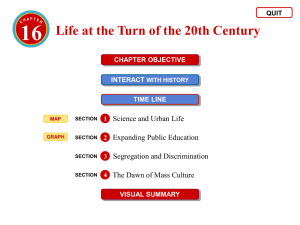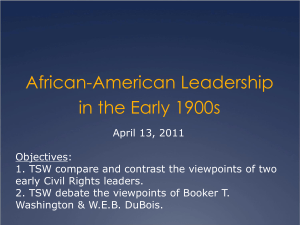Education, Jim Crow, and Women in the Progressive Era
advertisement
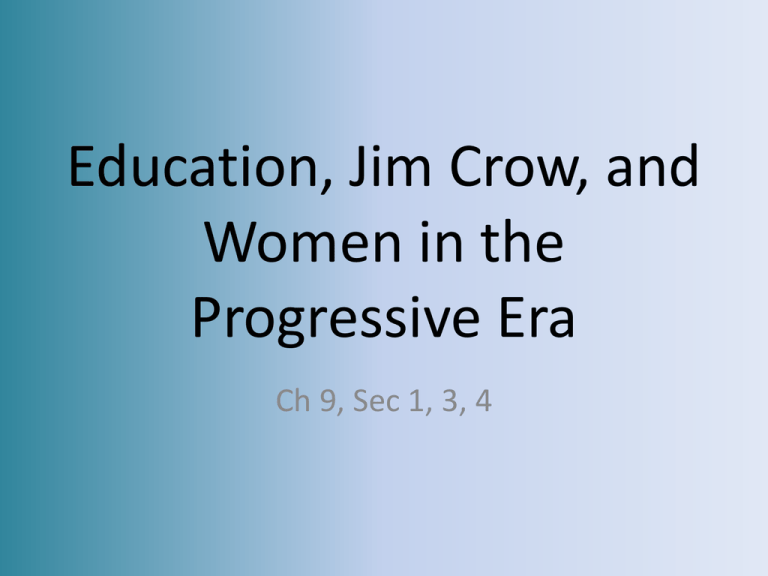
Education, Jim Crow, and Women in the Progressive Era Ch 9, Sec 1, 3, 4 Education • By 1865, 50% of white children attended school. – 2% graduated from high school. • Push for more school funding, longer school year, child labor laws. – By 1910, 72% of children attended school. • 8.6% graduated high school. • Compulsory education. 1865 School 1910 School • Immigrants highly valued education. – Children and adults attended. • Schools aided in assimilation. – Taught English, American history, culture, values. • Religious schools existed. • Schools segregated by color. • Colleges, universities opened in huge numbers in late 1800s, early 1900s. – Only wealthy families could afford, at first. • Women’s colleges began to open, men’s colleges began to accept women. • Few colleges would accept black students. • During Reconstruction, many black universities were founded. • Booker T. Washington founded Tuskegee Institute in Alabama. – Taught students skills and trades to push for economic equality. • W.E.B. DuBois wanted black students do study liberal arts and become political leaders. – Take pride in both African and American heritages. Tuskegee Institute Booker T. Washington W.E.B. DuBois Discrimination and Jim Crow • After Civil War, slavery ended, discrimination began. • Voting restrictions: – Property Test-had to own property to vote. – Poll Tax-had to pay a tax to vote. – Literacy Test-be able to read, write, meet minimum standards of knowledge. – Grandfather Clause-if your grandfather could vote, you could vote. • Did not single out black voters (unconstitutional), but really did. “What is that big word?” • Segregation also existed, especially in south. – Separating a group of people from the whole. – Known in the south as Jim Crow Laws. • Black and white segregated in schools, hospitals, public buildings, restaurants, public transportation, water fountains, restrooms. • Supreme Court case Plessy v. Ferguson established “separate but equal” doctrine. – Segregation was legal, as long as facilities were equal. – Rarely equal in practice. • Segregation sometimes turned violent. – Suspected criminals, blacks who got “uppity” were sometimes subjected to lynching. • Hanging. • Many southern black families moved north. – Faced “de facto” discrimination. • By custom, not law. • Many, black & white, opposed discrimination. • 1909, Mary Ovington founded NAACPNational Association for the Advancement of Colored People. – Goal-abolish segregation, discrimination, gain civil rights for black citizens. Mary Ovington Women • Wanted suffrage, to control their own property & income, have access to higher education & professional jobs. • For the most part, women were still homemakers. – Worked outside home as maids, nurses, teachers. • Many did volunteer work. – Joined clubs that promoted suffrage, temperance, women’s rights. • As more women went to school and entered workforce, they began to demand more. • “New Women” changed fashion, hairstyles to be more convenient, wanted more out of marriage, access to birth control info. • Suffrage movement grew. • Women also had increased purchasing power. – Creation of department stores, mail-order catalogs. A.J. Stewart Co., First Department Store
